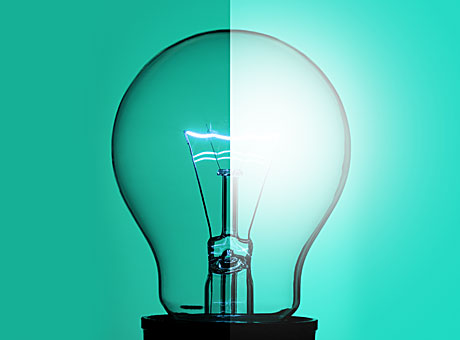
Simple solution may help older adults’ vision
Home lighting levels below recommended range

Older adults who have 20/20 vision in their eye doctors’ offices may not see as well at home. School of Medicine researchers suggests dim lighting may be the culprit.
Their study is published online in the journal JAMA Ophthalmology.
“It’s very common for older patients to have concerns about their vision but then test well on the eye charts when we examine them,” said first author Anjali M. Bhorade, MD, a Washington University ophthalmologist at Barnes-Jewish Hospital.
“In this study, we found that vision in patients’ homes was significantly worse than in the clinic. The major factor contributing to this difference was poor lighting in the home.”
The researchers studied 175 patients ages 55-90. These included 126 with glaucoma. All patients had their vision measured at home and at the Glaucoma and Comprehensive Eye Clinics at the School of Medicine.
The average scores on vision tests were better in the clinic than at home, Bhorade said. Nearly 30 percent of the patients with glaucoma were able to read at least two or more extra lines on an eye chart in the clinic than on the same chart at their homes, and 39 percent of those with advanced glaucoma read three or more additional lines in the clinic.
— Anjali M. Bhorade, MD
“Older adults with and without glaucoma had similar differences in vision between the clinic and home,” said Bhorade, an associate professor of ophthalmology and visual sciences.
“These differences occurred not only with distance and near vision, but with contrast sensitivity and glare testing, too. The biggest difference we observed was for distance vision in patients with advanced glaucoma. They had even bigger declines in vision at home," she said.
Lighting levels were below the recommended range in more than 85 percent of the homes visited.
“Since most older adults spend the majority of time at home, our study suggests that better lighting may increase vision and possibly improve the quality of life for a large number of people,” Bhorade said.
Although the study didn’t look specifically at potential dangers associated with low light, such as falls, other research has determined that a difference of two or more lines on an eye chart is associated with a significant difference in how a person functions in daily life.
The findings suggest that a simple solution may help older adults function at their maximum potential.
“Clinicians should refer their patients for a customized in-home evaluation by an occupational therapist or low-vision rehabilitation specialist who can make suggestions to optimize the lighting in people’s homes,” Bhorade said.






